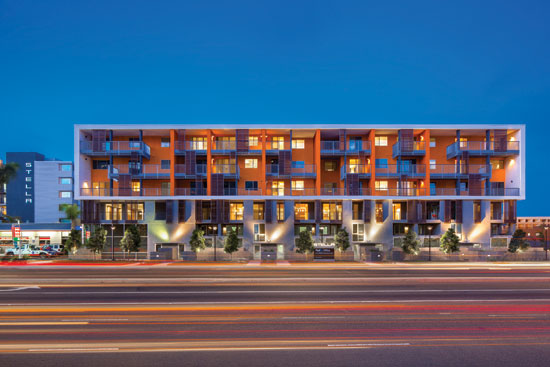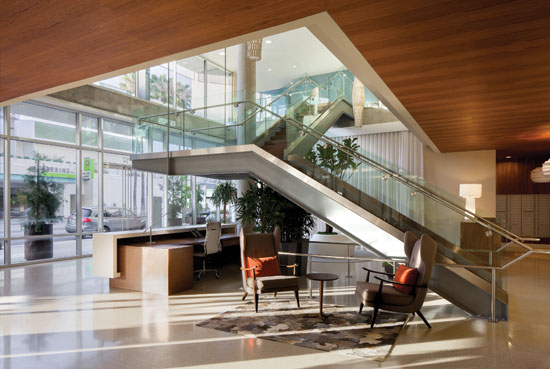Mid-Rise Wood Construction
Fire Protection Requirements
Fire-resistance rating requirements for building elements, based on construction type and fire separation distance, are provided in IBC Table 601. Chapter 7 of the IBC covers materials and assemblies used for fire-resistance-rated construction and separation of adjacent spaces.

*Source: IBC Table 601, **IBC Table 706.4
Fire-resistance requirements for Type IIIA and Type VA construction
Wood-frame building elements that require fire resistance often have their fire-resistance rating determined in accordance with the test procedures set forth in ASTM E119, Standard Test Methods for Fire Tests of Building Construction Material or UL 263 Fire Tests of Building Construction and Materials. The code also provides alternative methods for determining fire resistance per IBC Section 703.3, which includes prescription tables in 720 or calculations for fire resistance in 721.
Fire-Resistance Assemblies
One-hour and two-hour fire-resistance requirements are generally provided by fire-rated assemblies that include gypsum sheathing.
Lists of accepted rated wood floor and wall assemblies are available from the American Wood Council (DCA 3: Fire-Rated Wood-Frame Wall and Floor/Ceiling Assemblies, awc.org) and APA (Form W305, apawood.org).
Other sources are (UL) Fire-resistance-rated Systems and Products, the UL Fire Resistance Directory, and the Gypsum Association's Fire Resistance Design Manual.
Fire Retardant-Treated Wood (FRT)
The building code (IBC Section 2303.2) permits exterior two-hour rated bearing walls in Type III construction to be constructed of fire retardant-treated (FRT) wood, an acceptable substitute for a non-combustible material.
Designing for Different Fire Ratings
One framing consideration for Type IIIA is that floors and walls may have different fire ratings. Since load bearing exterior walls are required to have a two-hour rating, the intersection of a one-hour floor requires detailing. This can be accomplished by allowing the wall studs with one layer of gypsum to extend to the underside of the floor sheathing, and supporting the floor framing off the top plates with the use of a hanger designed to span over a layer of gypsum sheathing. Another framing option is to hang the floor framing off a 2x ledger, which provides as much if not more fire resistance as the layer of gypsum. The one-hour wall rating plus the one-hour floor system yields the required two-hour rating. Designers should work with their local building official to determine an acceptable solution to fire-resistance detailing at the floor-to-wall intersection as the code is silent in this area.
Fire Walls
Fire walls are not required by the building code; however, they may be utilized to increase the square footage of a building. For R-1 (transient) and R-2 (permanent) occupancy, IBC Section 706.4 requires fire walls in Type IIIA buildings to be three-hour fire-resistance-rated constructed with non-combustible framing. In Type VA buildings, walls are permitted to have combustible framing and a two-hour fire-resistance rating. Under the NFPA 221 Standard for High Challenge Fire Walls, Fire Walls and Fire Barrier Walls, designers may build a two-hour rated fire wall using two contiguous one-hour fire-resistance-rated assemblies.












